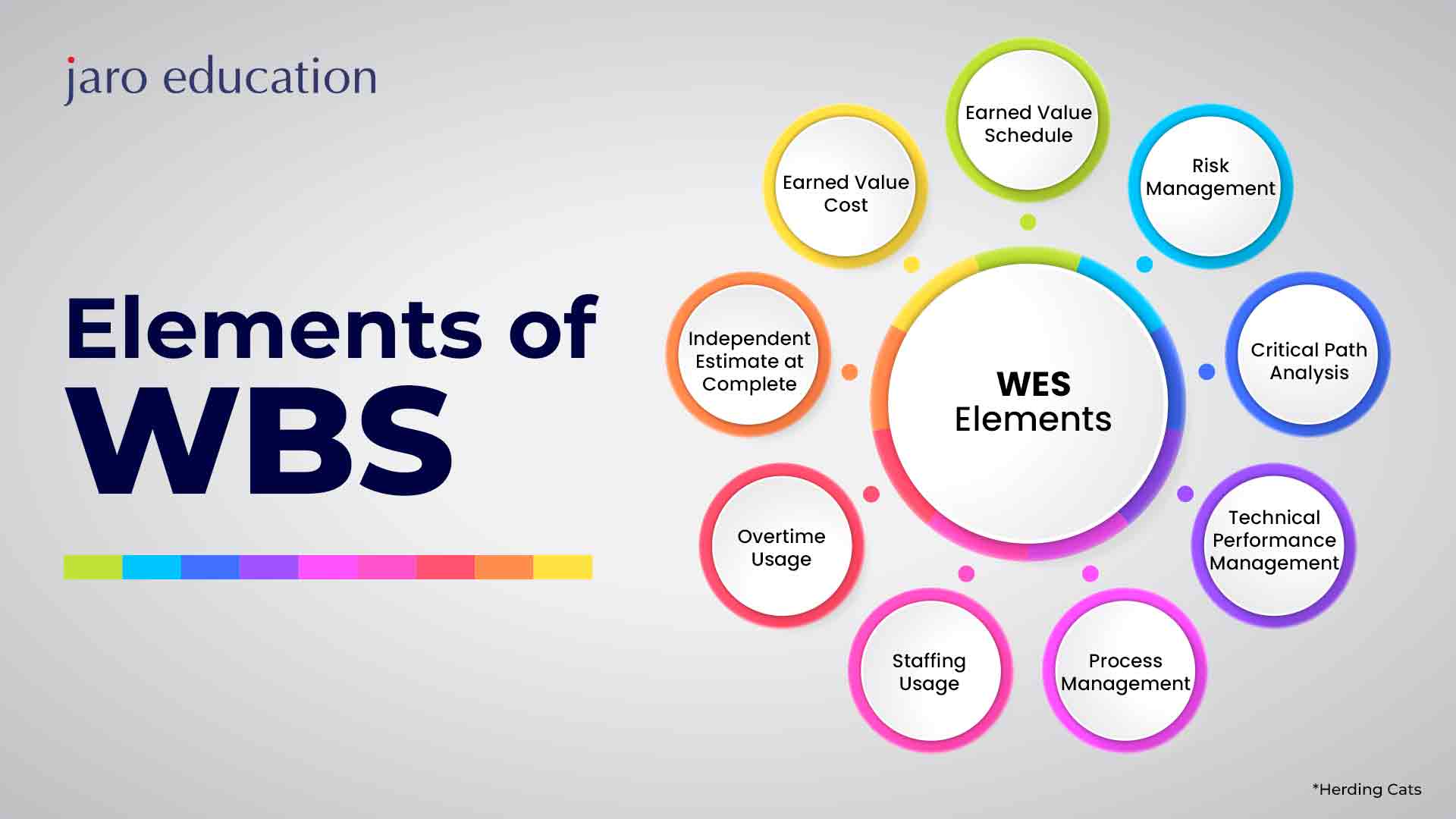
Work breakdown structure or WBS is a strategy for completing a multi-step complex project in project management. It is a method of dividing and conquering large projects to complete them more efficiently and quickly. It is one of the most important project management tools currently available. WBS in project management singlehandedly combines schedule baselines, scope and cost, ensuring that project plans are in sync. WBS can be both deliverable-based and phase-based.
Project management has become a crucial field all over the globe. Since businesses offer “mission mode” operations, professionals must deliver high-quality projects within budget and on time. However, due to the lack of relevant skills, most people fail to do so. Thus, NITIE (Indian Institute of Industrial Engineering) is offering an Executive Certificate Program in Advanced Project Management and Analytics. This course provides the knowledge of analytical techniques to aspiring project managers to successfully manage projects with quality, cost, and time constraints. Register with Jaro Education to learn more about this program and get started soon.
Fundamentals of Work Breakdown Structure
Work breakdown structure in project management is critical. It is often presented as a hierarchical structure with the main project at the top, followed by sub-projects, work groups and lastly, tasks. The primary objective of a work breakdown structure is to guarantee that all essential work is included in the project plan, as well as it offer a framework for allocating responsibilities and tracking progress. It serves as input for five primary project management activities: resource planning, cost estimating, risk management planning, and cost budgeting.
Elements of WBS
The elements of the work breakdown structure in project management are as follows:
Work breakdown structure dictionary
A WBS dictionary is a document that lists all WBS components. It’s an important element of a work breakdown structure in project management since it makes it simple for stakeholders and project participants to understand the WBS’s terminology.
Work packages
As per the Project Management Institute’s (PMI’s) definition, work packages are the “lowes levels of WBS”. This is done so that a team member or department may be assigned a work package, a manageable collection of connected duties. These work packages are an important part of the WBS since you can forecast their expenses and duration as a project manager.
Table of Contents
WBS levels
The hierarchy of a work breakdown structure element is determined by the WBS levels. Most work breakdown structures have three layers: the project’s principal deliverables, control accounts, project deliverables, and work packages.
Project deliverables
Project deliverables are the planned outcomes of project activities and work bundles. These can be both tangible as well as intangible that is supposed to be submitted according to the scope a project has. It can be mistaken as the final output; however, it is defined as the output related to a project which can be submitted anytime and at any phase of the project.
Tasks
Work packages are made up of tasks that define the scope of a project. A WBS in project management allows professionals to identify the requirements, owner, description, length, dependencies, and status of each job.
Control accounts
Work packages are classified as control accounts, which are then utilized to determine their status. They are used to control certain project scope aspects.

*Herding Cats
Types of WBS
The work breakdown structure is of two types: deliverable-based and phase-based.
Deliverable-based WBS
This is a deliverable-oriented hierarchical work breakdown. It emphasizes that project managers will assess the entire project scope and break their work into deliverables that support it. This strategy works best for initiatives with a short time frame and a clear purpose. One example is creating the yearly income report.
Phase-based WBS
Using project phases, project managers can create work packages that contain tasks. These job groups are then completed in stages. As a result, for longer projects with uncertain goals, a phase-based WBS should be employed.
How is a WBS in Project Management Helpful?
Work breakdown structure is important for project management for various reasons. First, it divides the undertaking into smaller components, making it less intimidating and more doable. Second, it serves as a road map for the many individuals and teams involved in the project. Many projects have many teams working together, all of which must coordinate and integrate in order for the project to be completed. Using a WBS, individuals and teams may focus on their specific responsibilities and deliverables while also recognizing how their component fits into the overall project. Finally, a work breakdown structure is an effective tool for tracking project completion, setting milestones, and allocating budget resources. Using the 100% rule, project managers may be certain that the project has been appropriately funded and that they will not encounter any bottlenecks as a result of a “surprise” deliverable.
How to Design a Work Breakdown Structure in Project Management?
Creating a work breakdown structure is one of the primary tasks performed when beginning a new project, since it gives a clear and unambiguous framework for all subsequent project planning. To design a WBS, there are a few things to keep in mind.
- Project managers need to first break down the large projects into smaller components that can be easy to manage.
- Once the key deliverables have been selected, individuals must deconstruct them into further smaller parts until they reach the proper degree of detail for their project.
- A work breakdown structure should be easy to interpret and utilize. The objective is to produce a tool that will aid in project planning and execution, not to create a document that is so complex which ultimately proves to be worthless.
- Once a format has been set for the WBS, professionals should stick with it, throughout the project. This will assist in guaranteeing that everyone working on the project speaks the same language and comprehends the job in the same way.
- A work breakdown structure should be adaptable enough to handle changes that occur throughout the project. However, it can be changed as the project continues and fresh information becomes available to reflect the new knowledge of the task.
WBS characteristics
Every project has a definite work breakdown structure. However, most of the projects share common WBS characteristics. The critical characteristics are discussed here.
- Firstly, a WBS starts with a clear and concise explanation of the project’s goals. This allows participants to know about everything that needs to be done in the said project.
- Following the explanation, the project needs to be deconstructed into smaller and more manageable pieces. The breakdown can be accomplished using different techniques, but ideally, the best structure to break down a project is to divide it into phases, tasks and sub-tasks.
- Lastly, every work breakdown structure should be assigned to a particular team or person. This ensures righteous delegation of tasks without any of them being overlooked.
By following these steps, professionals can create a well-thought-out work breakdown structure.
Work Breakdown Structure Vs Work Breakdown Schedule
A work breakdown structure is a method for dividing a job into smaller, more manageable tasks. This framework is frequently used to construct a precise plan of action for a project.
On the other hand, a work breakdown schedule is a tool for tracking project progress. A timetable of this sort can be used to detect any possible difficulties or delays that may arise throughout the course of a project.
What are the Techniques for Creating a Work Breakdown Structure?
To design a work breakdown structure, you can implement numerous techniques. Find these techniques below.
Instructions
To design a work breakdown structure, organizations set elaborate instructions.
Top-down strategy
According to the top-down strategy, professionals must split down the largest job or module in the project. It necessitates more logic and it is often the recommended way for constructing WBS. This strategy will first discover the answer and then dissect it into the smaller stages necessary to accomplish it.
Analogy technique
This might be particularly useful if there is a comparable project like an eCommerce business website and has previously worked on a similar project. Based on previous experience on a project that was straightforward to deconstruct.
Bottom-up strategy
This strategy is quite simple. Professionals must pick an activity that is easy to perform and finish it first. The bottom-up strategy is good for brainstorming and problem-solving.
Mind-mapping method
This is a highly beneficial method that most project specialists employ and was designed specifically for project managers. In this method, they express the job in a non-linear, branching fashion before creating the WBS structure. Several mind-mapping tools on the market allow users to write and draw ideas in a non-linear style.
Thus, handling large projects can be a daunting task that can be made simple with a work breakdown structure (WBS). By using their management skills, project managers can deconstruct the major project into smaller groups to analyse them better and complete them fast.
If you want to learn about project management and its different techniques to make a project successful, consider taking up an Executive Certificate in Advanced Project Management and Analytics course from IIM Mumbai. It is a 7-8 month online program that would provide candidates with knowledge and skills related to project management. With these skills, candidates can work on capstone projects that would reflect on their curriculum vitae.









